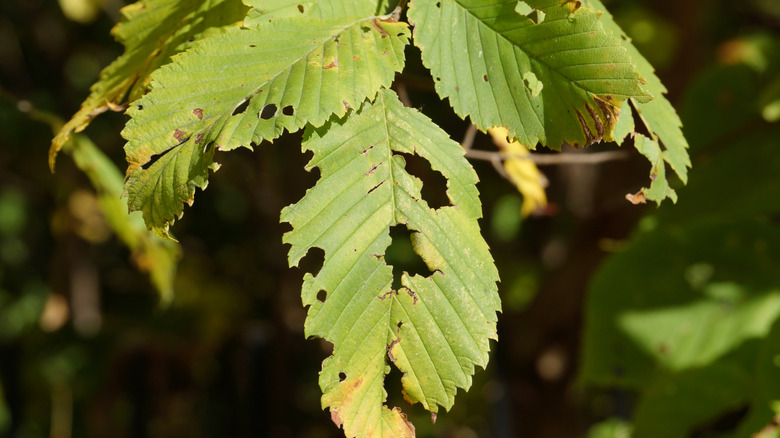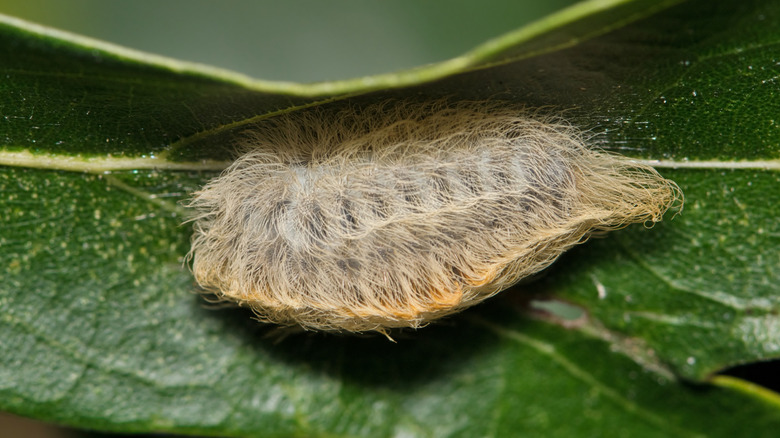The Pest To Watch Out For In Your Yard This Fall That Delivers A Nasty Bite
As temperatures drop and leaves begin to fall, one pest to watch out for in your yard this season is far smaller — and far furrier — than most expect. The puss caterpillar (Megalopyge opercularis), sometimes called the asp caterpillar, looks more like a tiny tuft of silk than a stinging insect, yet its touch can deliver one of the most painful reactions of any caterpillar in North America. Covered in dense, catlike "fur," these larvae hide hollow spines that are filled with venom, and can cause intense burning, swelling, and nausea if brushed against.
Puss caterpillars are the larval form of the southern flannel moth, a fuzzy, harmless adult that emerges after the caterpillar overwinters in a cocoon. This poisonous type of caterpillar is on the rise in southern Texas, but it's also found throughout the United States (notably, in New Jersey, Florida, and Arkansas), with peak populations in early summer and fall. The caterpillars feed on the leaves of deciduous trees like oak, elm, maple, and sycamore, and will sometimes drop from overhead branches onto unsuspecting gardeners or pets.
While their soft coats might tempt a closer look, these caterpillars are best admired from a distance. Their venom evolved as a powerful defense — not aggression — but that doesn't make their sting any less memorable. Avoid touching fuzzy caterpillars this fall, no matter how harmless they appear.
How to stay safe if this venomous caterpillar shows up in your yard
The puss caterpillar's sting is notoriously painful. Those stung by it describe the feeling as something that's similar to touching burning coals. When the caterpillar's fur-like hairs break, toxins are released that target the skin's cells. This results in sharp pain, which is followed by swelling, redness, and occasionally lightheadedness or trouble breathing. There is a special gene that the caterpillar shares with certain bacteria, and this gives its venom its strength, enabling it to puncture human cells.
If you're stung, it's best to remove embedded spines with tape. Then, thoroughly wash the affected area with soap and water, apply ice, and seek medical care if you experience any severe symptoms. Most reactions subside within a few hours, though swelling or rash can last several days. To prevent encounters, check shade trees like oak and elm regularly, and wear gloves when gardening in late summer and fall, and remember that there is one genius vinegar trick that stops caterpillars from munching in your garden if you're struggling with them.
If you have children, ensure that they avoid handling fuzzy caterpillars — the puss caterpillar isn't alone in its defenses. There are a few pesky poisonous caterpillars to watch out for in your garden, like the io moth or saddleback caterpillar. Fortunately, the adult southern flannel moth poses no threat, emerging in spring with a gentle reminder that even nature's most painful surprises have their beautiful side.

